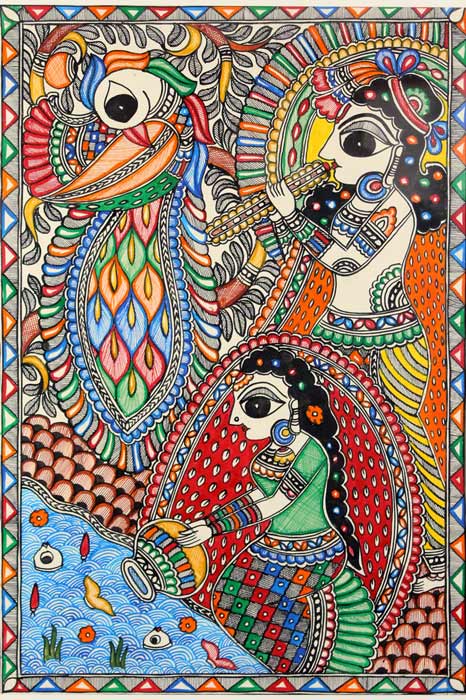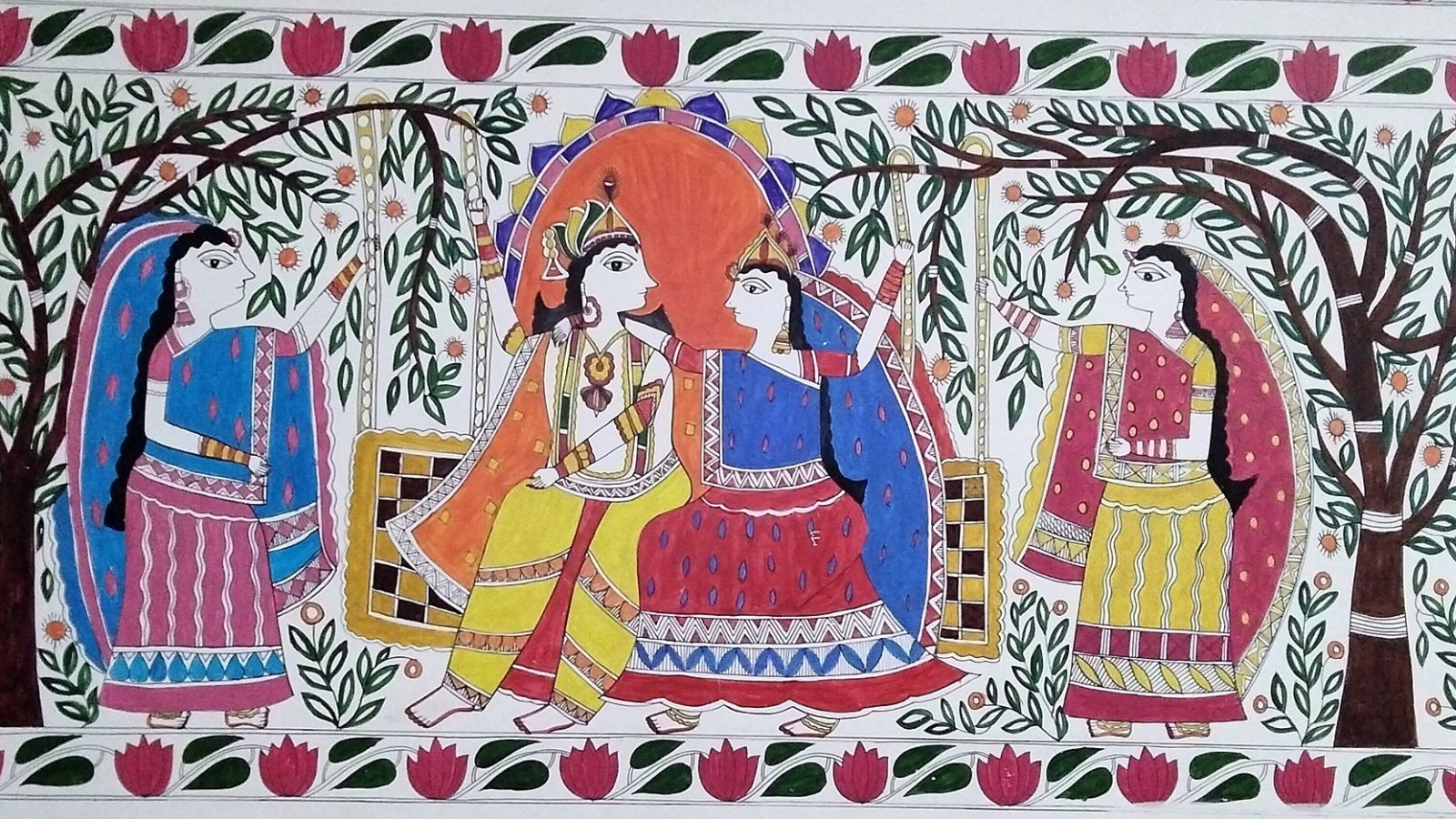Madhubani art, literally ‘forest of honey,’ derives its name from the Madhubani district of Bihar. The region was once known for its forests with abundant honey reserves, hence the name.
This ancient art form is believed to be several thousand years old, originating from the time when King Janaka commissioned artists to capture the wedding of Sita and Rama. Initially known as Mithila art, it was practiced in the Mithila region, which corresponds to parts of present-day Bihar and Jharkhand in India and southeastern Nepal.
Discovery by a British Officer
The world outside India remained unaware of Madhubani paintings until 1934, when British Colonial Officer William G. Archer discovered them while inspecting the extensive damage caused by an 8.0 magnitude earthquake. The disaster had exposed the interior walls of some homes that had previously been covered. As Archer examined these newly revealed walls, he stumbled upon the intricate artworks. It was a serendipitous discovery that left him stunned!

Though Archer brought the art form to light, it’s only in the 1960s it gained commercial recognition. A foreign artist, captivated by the unique style, encouraged local women to recreate these intricate designs on paper. This initiative allowed the artist to take the paintings back to his homeland, where they were exhibited to much acclaim. This commercialization provided a new source of income for the women of Madhubani and helped preserve the tradition.
Eco-friendly Practices and Techniques
Known for their intricate patterns, bold colors and themes inspired by nature, mythology and folklore, Madhubani paintings are originally done on mud walls. They are created using natural tools like fingers, twigs, brushes, pen-nibs, and matchsticks. The use of eco-friendly materials—such as natural dyes and pigments derived from plants, charcoal, and soot—adds to the uniqueness of these paintings and reflects the artist community’s deep connection with nature.
Saving Trees Through Art
In a unique conservation effort, artists in Bihar used Madhubani art to paint images of Hindu deities on trees to save them from being cut. Images of gods and goddesses like Krishna, Durga, and Saraswati can be seen on trees along the highway in the Madhubani district. This initiative not only drew tourists but also deterred the god-fearing locals from cutting the trees.
Today, Madhubani paintings have gained international acclaim, representing the rich cultural heritage and artistic talent of the Madhubani region. The art form received a Geographical Indication (GI) tag in 2007. The GI tag not only safeguards its unique identity, but also ensures it continues to benefit the local artists and communities.
Picture Credits: Wikipedia, gitagged.com



